Mastering Hydroponic Basil Cultivation: Discover the Top 5 Varieties
Are you ready to transform your culinary creations with the freshest flavors? Hydroponic Basil is your ticket to a vibrant herb garden, right in the comfort of your home.
This guide will unveil the top five basil varieties that thrive in hydroponic systems, each with its unique aroma and taste to elevate your dishes. From the robust sweetness of Genovese to the citrusy zing of Lemon Basil, mastering the art of hydroponic cultivation promises a bountiful harvest.
Join us as we explore the secrets to nurturing these aromatic wonders, ensuring your kitchen is always stocked with the freshest herbs. Dive into the world of hydroponic basil and discover how easy and rewarding it is to grow your own. 🌿
Table of Contents
Basil Varieties for Hydroponic Cultivation
When it comes to hydroponic cultivation of basil, several varieties thrive in this unique growing environment. Each basil variety brings its distinct characteristics to the table, making it a delightful choice for hydroponic enthusiasts to explore.
One popular variety for hydroponic cultivation is Genovese basil. Known for its large, fragrant leaves and intense aroma, Genovese basil is a favorite for culinary purposes. Its rich and robust flavor makes it ideal for making pesto or adding a refreshing touch to caprese salads. This variety requires optimal growing conditions, including proper lighting and nutrient solutions, to reach its full potential in a hydroponic system.
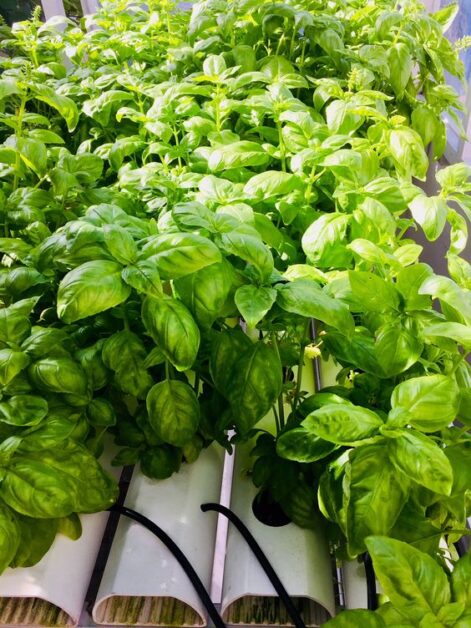
Another basil variety that excels in hydroponics is Thai basil. Recognized for its strong anise flavor and purple-tinged leaves, Thai basil adds an exotic twist to any dish. With its ability to withstand high humidity levels, Thai basil thrives in the controlled environment of a hydroponic system. Its unique flavor profile makes it a popular choice for Asian cuisine and herb-infused cocktails.
Whether you are looking for a classic basil variety or something with a bit of zest, hydroponic cultivation offers a range of options to satisfy your culinary cravings. Selecting the right basil variety for your hydroponic system requires careful consideration of factors such as taste preference, growing conditions, and intended culinary uses. By exploring the unique characteristics of each variety and understanding their specific requirements, you can create a thriving hydroponic basil garden that brings a burst of freshness to your kitchen.
The top 5 basil varieties suitable for hydroponic cultivation
Basil is an incredibly versatile herb that adds a burst of freshness and flavor to a wide range of dishes. When it comes to hydroponic cultivation, there are a few basil varieties that stand out for their adaptability and high yield. Let’s explore the top five basil varieties that are well-suited for hydroponic systems.
1. Genovese Basil stands out as the quintessential Italian basil, prized for its robust flavor that’s perfect for pesto. Its large, glossy leaves are a deep green, and the plant grows vigorously in hydroponic systems. When selecting Genovese basil for hydroponics, look for seeds or seedlings that are specifically bred for hydroponic growth to ensure they thrive in a water-based environment.
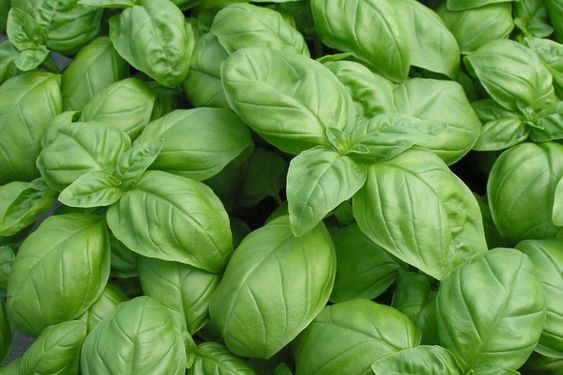
2. Thai Basil: is a must-have for lovers of Asian cuisine. Its licorice-like flavor and sturdy structure make it a standout in stir-fries and curries. The plant’s resilience and compact growth habit make it an excellent candidate for hydroponic systems. When choosing Thai basil, opt for varieties that are known for their strong stems and prolific leaf production.
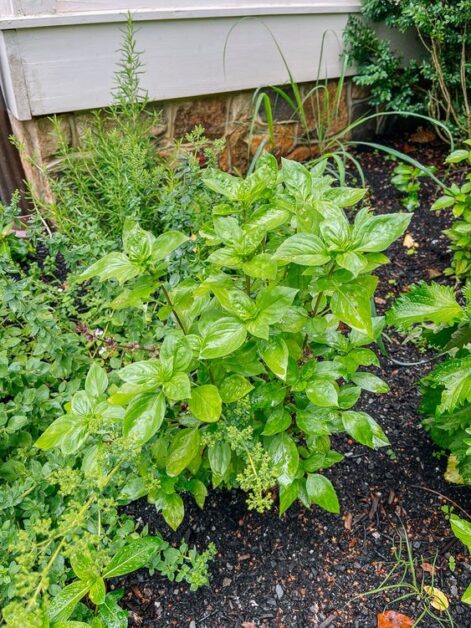
3. Purple Basil: With striking dark purple leaves, purple basil not only adds a splash of color to your garden but also to your dishes. It has a slightly milder flavor compared to its green counterparts but still carries a distinct basil taste. Purple basil varieties like ‘Dark Opal’ or ‘Purple Ruffles’ are not just culinary delights; they’re also ornamental treasures in hydroponic gardens.
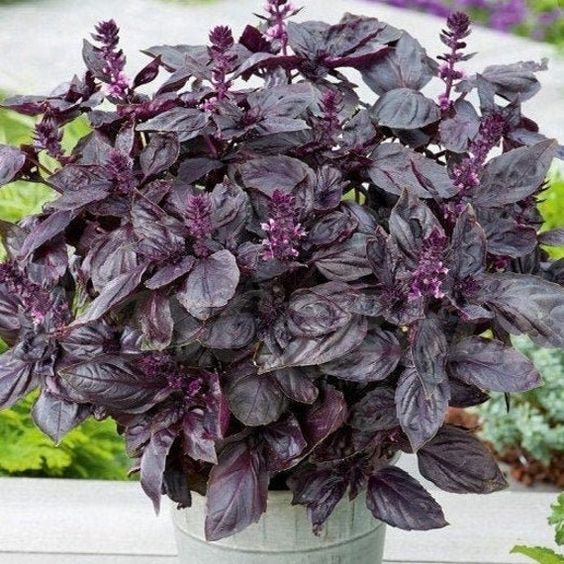
4. Lemon Basil: Lemon basil, as the name suggests, offers a refreshing citrus twist to the traditional basil flavor. Its light green leaves and delicate white flowers are a treat for the senses. In hydroponics, lemon basil requires ample light to develop its signature lemony scent and taste. Select varieties that are known for their intense aroma and vigorous growth in hydroponic conditions.
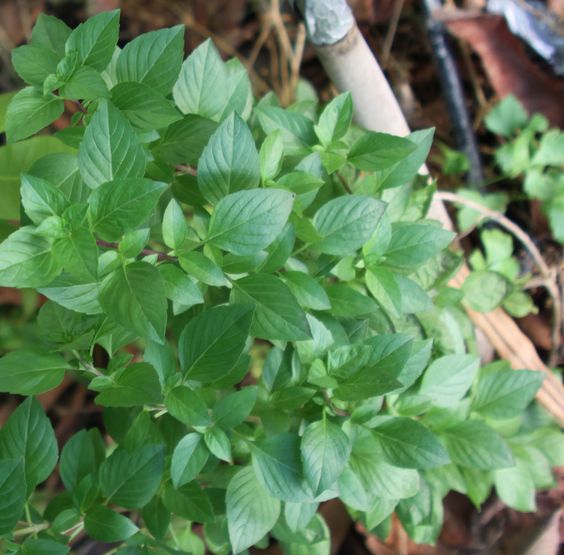
5. Cinnamon Basil: brings a unique warmth to the basil family with its subtle hint of cinnamon. The plant features small, narrow leaves and delicate pink flowers, making it a visually appealing addition to any hydroponic garden. When selecting cinnamon basil for hydroponics, choose varieties that are adaptable to various light and temperature conditions to ensure a successful harvest.
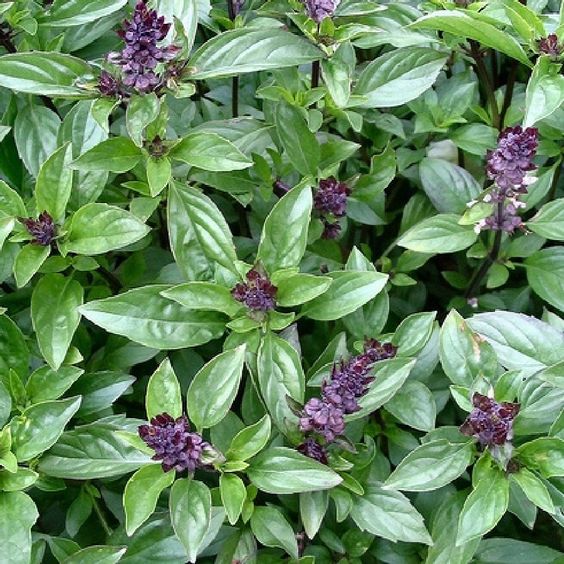
These top five basil varieties are not only easy to grow in hydroponic systems but also offer distinct flavors, aromas, and visual appeal. Experiment with different varieties to create an herb garden that caters to your culinary preferences and adds a touch of freshness to your meals.
Exploring the unique characteristics of each variety
Genovese basil, known for its large dark green leaves, is one of the most commonly grown varieties in hydroponic systems. This variety is highly aromatic, with a sweet and slightly spicy flavor profile. Its deep, rich flavor makes it a favorite for pesto and other Italian dishes. The plant grows vigorously, producing abundant foliage that can be harvested multiple times throughout the growing season.
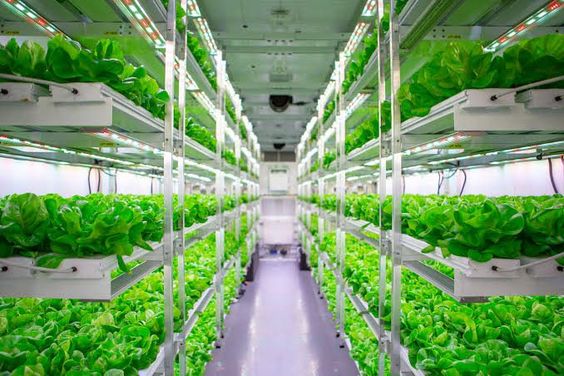
Thai basil is another popular choice for hydroponic cultivation. This variety has smaller leaves compared to Genovese basil, but it makes up for it with its unique taste and aroma. Thai basil has a distinct licorice flavor, with hints of anise and mint. It is commonly used in Asian cuisine, particularly in Thai, Vietnamese, and Chinese dishes. Thai basil also adds a vibrant touch to salads and cocktails with its purple-hued stems and flowers.
Factors to consider when selecting basil varieties for hydroponics
When selecting basil varieties for hydroponics, there are several factors to consider to ensure successful cultivation.
First and foremost, it is important to choose basil varieties that are well-suited for hydroponic systems. Some varieties thrive in soil-based cultivation but may not perform as well in a nutrient-rich, water-based environment. Look for basil varieties that have been specifically bred or recommended for hydroponics, as they will have characteristics that make them more adaptable to this growing method.
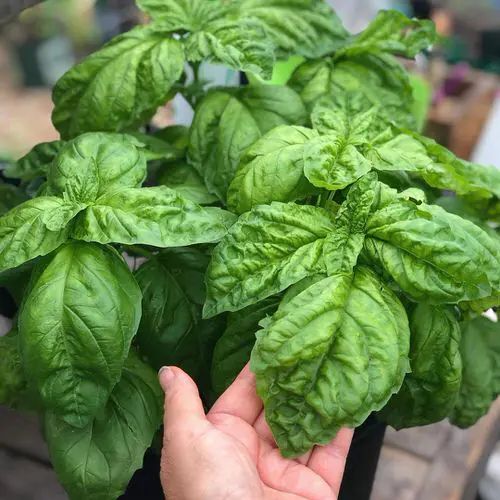
Another factor to consider is the desired purpose or use of the basil. Are you growing it for culinary purposes, medicinal use, or simply for its aromatic qualities? Different basil varieties have unique flavors, aromas, and medicinal properties, so selecting the right variety will depend on your specific needs. For example, Genovese basil is known for its classic sweet flavor and is commonly used in Italian cuisine, while Thai basil has a distinct anise-like flavor and is popular in Thai dishes.
The table bellow makes it easier to choose a basil variety for your hydroponics garden based on its characteristics:
| Basil Variety | Flavor Profile | Growth Habit | Disease Resistance | Yield Potential | Aesthetic Appeal |
|---|---|---|---|---|---|
| Genovese | Robust, ideal for pesto | Compact, suited for hydroponics | Resistant to common diseases | High yield, more leaves | Deep green, glossy leaves |
| Purple Basil | Milder flavor, distinct taste | Compact, ornamental | Moderate resistance | Moderate yield | Dark purple leaves, visual interest |
| Thai Basil | Licorice-like, strong flavor | Sturdy, compact growth | Good resistance | High yield, sturdy stems | Green leaves, purple stems |
| Lemon Basil | Citrusy, refreshing | Compact, requires ample light | Resistant to common diseases | High yield, intense aroma | Light green leaves, white flowers |
| Cinnamon Basil | Warm, subtle cinnamon hint | Adaptable to light and temperature | Moderate resistance | Moderate yield | Small, narrow leaves, pink flowers |
Creating the Ideal Hydroponic Environment for Basil
Creating the ideal hydroponic environment for basil is crucial to maximize growth and harvest quality. To optimize temperature and humidity levels, it is recommended to maintain a temperature range of 70-75°F (21-24°C) during the day and 60-70°F (15-21°C) during the night. Adequate ventilation should be provided to ensure fresh air exchange and to prevent excessive humidity, which can lead to fungal diseases.
Lighting requirements are another important aspect to consider in hydroponic basil cultivation. Basil plants thrive under full-spectrum lighting, such as LED or fluorescent lights, which provide the necessary wavelengths for photosynthesis. On average, basil plants require 12-14 hours of light per day. It is advisable to use a timer to ensure a consistent light cycle and promote optimal growth.

Maintaining appropriate nutrient solutions and pH levels is fundamental for healthy basil plants in a hydroponic system. Basil prefers a slightly acidic pH level, around 6.0-6.5. Regular monitoring of the pH is essential, as fluctuations can hinder nutrient uptake and impair plant growth. A balanced nutrient solution formulated specifically for hydroponic basil is recommended to provide the essential macronutrients (nitrogen, phosphorus, and potassium) as well as micronutrients (iron, manganese, zinc, etc.) necessary for robust growth and development. Monitoring and adjusting the nutrient solution regularly based on the plant’s needs will help ensure optimal nutrient uptake and overall plant health.
Creating the ideal hydroponic environment for basil requires careful attention to temperature, humidity, lighting, nutrient solutions, and pH levels. By providing these optimal conditions, gardeners can promote vigorous growth, enhance flavor and aroma, and ultimately enjoy a bountiful harvest of this popular culinary herb.
Optimizing temperature and humidity for basil growth
Maintaining the optimal temperature and humidity levels is crucial for ensuring the healthy growth of basil in a hydroponic system. Basil plants thrive in temperatures between 65 to 75 degrees Fahrenheit (18 to 24 degrees Celsius). Temperatures above this range can lead to reduced growth and increased susceptibility to diseases, while lower temperatures can slow down the growth rate. To maintain the ideal temperature, consider using a temperature-controlled environment such as a greenhouse or grow tent.
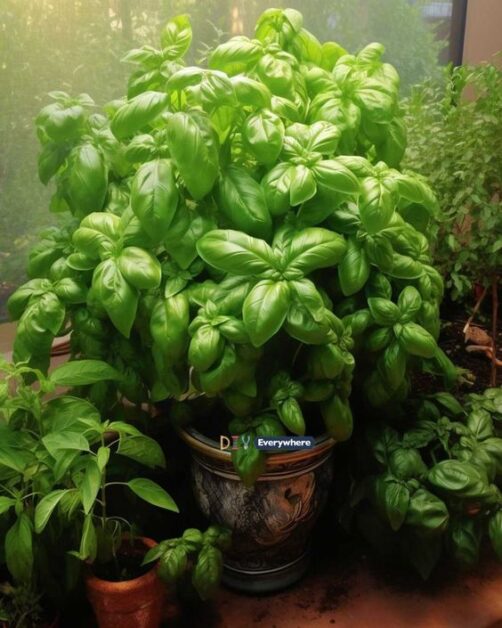
In addition to temperature, humidity plays a significant role in the growth of basil. Basil plants prefer a humidity level of 50 to 70 percent. High humidity can create a favorable environment for fungal diseases, while low humidity can result in leaf wilting and stunted growth. To control humidity, you can use a humidifier or dehumidifier depending on the requirements of your specific growing conditions. Additionally, proper air circulation within the hydroponic system helps in regulating humidity and preventing the buildup of excess moisture. Implementing these measures will help ensure the optimal conditions for basil growth in a hydroponic setup.
Table with the optimal temperature and humidity levels for each basil variety:
| Basil Variety | Optimal Temperature Range | Optimal Humidity Level |
|---|---|---|
| Genovese | 70-75°F (21-24°C) | 40-60% |
| Purple Basil | 50-70°F (10-21°C) | 40-60% |
| Thai Basil | 70-75°F (21-24°C) | 40-70% |
| Lemon Basil | 70-80°F (21-27°C) | Higher humidity |
| Cinnamon Basil | 70-85°F (21-29°C) | 40-60% |
Lighting requirements for hydroponic basil cultivation
To ensure optimal growth and development of basil in a hydroponic system, proper lighting is crucial. Basil plants require a minimum of 12-16 hours of light per day for healthy photosynthesis and to stimulate growth. When selecting lighting options, it is essential to consider the spectrum and intensity of the light.
LED (Light Emitting Diode) lights are a popular choice for hydroponic basil cultivation. These lights provide a balanced spectrum of red and blue wavelengths, which closely mimic natural sunlight. Additionally, LED lights are energy-efficient and generate very little heat, making them suitable for indoor hydroponic systems.
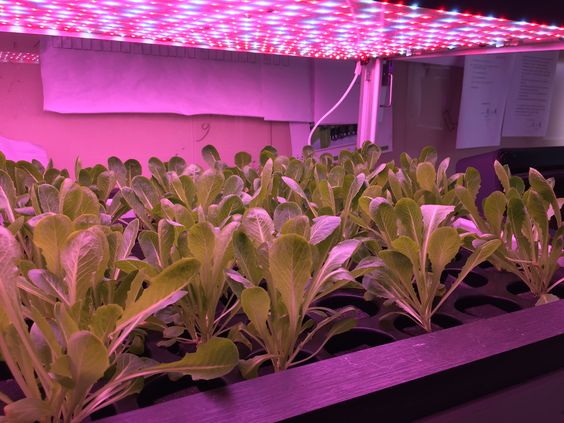
Another lighting option is High-Intensity Discharge (HID) lights, such as Metal Halide (MH) and High-Pressure Sodium (HPS) lights. MH lights emit a bluish spectrum that promotes vegetative growth, while HPS lights emit a reddish spectrum that enhances flowering and fruiting stages. However, both MH and HPS lights produce more heat and consume more electricity compared to LED lights. Proper ventilation and cooling systems are necessary to manage the heat generated by HID lights, especially in enclosed indoor environments.
| Basil Variety | Light Requirements (Hours of Sunlight) | Daily Light Integral (DLI) |
|---|---|---|
| Genovese | 6-8 | 12-14 mol/m²/day |
| Purple | 6-8 | 6-18 mol/m²/day |
| Thai | 6-8 | 7-14 mol/m²/day |
| Lemon | 6-8 | 7-14 mol/m²/day |
| Cinnamon | 6-8 | 7-14 mol/m²/day |
Regardless of the lighting option chosen, it is crucial to keep the lights positioned at an appropriate distance from the basil plants. Generally, a distance of 12-18 inches above the plants is recommended to provide the optimum amount of light intensity without causing heat stress or leaf burn. Regular monitoring of light levels and adjustments to the lighting setup may be necessary to ensure the basil plants receive the ideal amount of light for optimal growth.
Nutrient solutions and pH levels for healthy basil plants
In hydroponic cultivation, nutrient solutions play a crucial role in providing the essential elements needed for healthy basil plants. These solutions consist of a carefully balanced mixture of minerals, which are dissolved in water and then supplied directly to the plant’s roots. The composition of nutrient solutions can vary depending on the specific needs of the basil variety being grown.
Different nutrients are required in varying quantities for optimal growth. The primary macronutrients include nitrogen (N), phosphorus (P), and potassium (K). Nitrogen is crucial for foliage development, phosphorus aids in root development and flowering, and potassium enhances overall plant health and disease resistance. These macronutrients, along with secondary macronutrients like calcium (Ca), magnesium (Mg), and sulfur (S), are typically supplied in balanced proportions to ensure healthy basil growth.
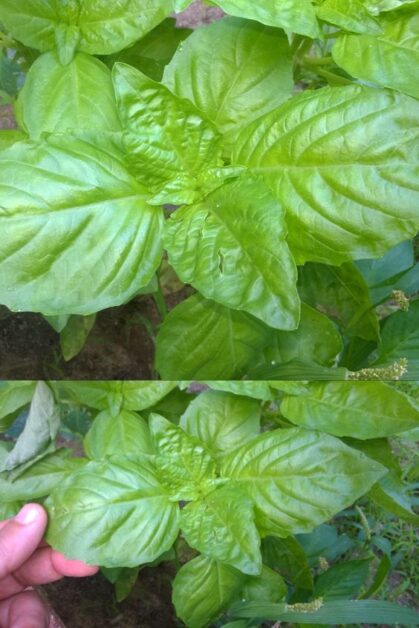
In addition to macronutrients, micronutrients are also essential for basil plants. These include elements like iron (Fe), manganese (Mn), zinc (Zn), copper (Cu), molybdenum (Mo), and boron (B), among others. While these micronutrients are required in smaller quantities, they are equally vital for various physiological processes in plants.
| Nutrient | Seedling Stage | Vegetative Stage | Flowering Stage |
|---|---|---|---|
| Nitrogen (N) | 100-150 ppm | 150-200 ppm | 100-150 ppm |
| Phosphorus (P) | 30-50 ppm | 50-80 ppm | 70-100 ppm |
| Potassium (K) | 100-200 ppm | 200-300 ppm | 250-400 ppm |
| Calcium (Ca) | 40-80 ppm | 80-120 ppm | 100-150 ppm |
| Magnesium (Mg) | 20-40 ppm | 40-60 ppm | 50-70 ppm |
| Sulfur (S) | 20-40 ppm | 40-60 ppm | 60-80 ppm |
| Iron (Fe) | 2-4 ppm | 4-6 ppm | 3-5 ppm |
| Manganese (Mn) | 0.5-1 ppm | 1-2 ppm | 1-1.5 ppm |
| Boron (B) | 0.3-0.6 ppm | 0.6-1 ppm | 0.5-0.8 ppm |
| Zinc (Zn) | 0.3-0.6 ppm | 0.6-1 ppm | 0.5-0.8 ppm |
| Copper (Cu) | 0.1-0.2 ppm | 0.2-0.4 ppm | 0.1-0.3 ppm |
| Molybdenum (Mo) | 0.01-0.05 ppm | 0.05-0.1 ppm | 0.05-0.1 ppm |
This table provides a clear overview of how the concentration of each macro and micronutrient changes as the basil plant progresses through its growth stages. It’s important to adjust the nutrient solution accordingly to ensure optimal plant health and productivity.
Maintaining the proper pH level of the nutrient solution is equally important in hydroponic basil cultivation. Basil plants prefer a slightly acidic pH range of around 5.5 to 6.5. The pH level affects the availability and uptake of nutrients by the roots. It is recommended to regularly monitor and adjust the pH of the nutrient solution to ensure optimal nutrient absorption and prevent nutrient deficiencies or toxicities.
By understanding the specific nutrient requirements and maintaining the appropriate pH levels, gardeners can provide the ideal conditions for healthy basil plants in a hydroponic system.
Setting Up a Hydroponic Basil System
When it comes to setting up a hydroponic basil system, there are several key factors to consider. The first step is to choose the right hydroponic system for basil cultivation. The most common types of systems used for growing basil hydroponically include the Nutrient Film Technique (NFT), Deep Water Culture (DWC), and Drip Irrigation systems. Each system has its advantages and disadvantages, so it’s important to evaluate your specific needs and resources before deciding.
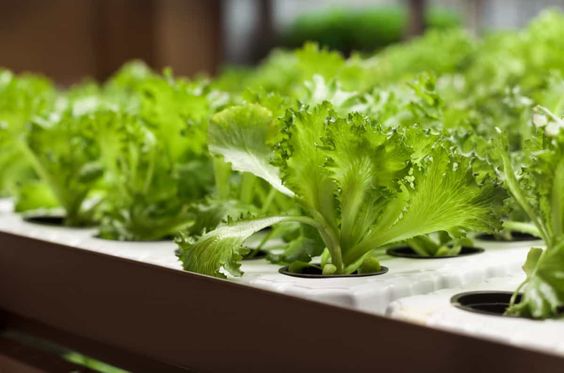
Once you have selected a hydroponic system, the next step is to set up and maintain it properly. This involves ensuring that the system is properly cleaned and sanitized to prevent the growth of pathogens and diseases. It is also important to ensure that the system is properly calibrated to provide the right balance of water, nutrients, and oxygen to the basil plants. Regular monitoring of pH levels and nutrient concentrations is crucial to maintain optimal plant growth and health. Additionally, it is important to have a reliable source of light that provides the necessary spectrum and intensity for healthy basil growth. By paying attention to these key aspects, you can create an ideal hydroponic environment that promotes the growth of robust and flavorful basil plants.
Choosing the right hydroponic system for basil cultivation
When it comes to choosing the right hydroponic system for basil cultivation, there are several key factors to consider. Firstly, the size of your space will play a crucial role in determining the type of system that is most suitable for your needs. If you have a small area, a compact system such as a nutrient film technique (NFT) or a deep water culture (DWC) system may be ideal. These systems allow for efficient use of space and can be easily scaled up or down depending on your requirements.
Another important consideration is the level of automation you desire. If you are a beginner or have limited time to dedicate to your hydroponic garden, an ebb and flow system with a timer or a drip system with an automated nutrient delivery system may be the best option. These systems require minimal manual intervention and can help ensure consistent growth and yield.
Additionally, the type of basil variety you plan to grow will also influence the choice of hydroponic system. Some basil varieties, such as Genovese or Sweet basil, have larger root systems and may require a system with ample space for root growth, such as a nutrient film technique or aeroponic system. On the other hand, smaller basil varieties like Thai basil or Lemon basil can thrive in compact systems such as a vertical tower or a modular hydroponic system.
By carefully considering these factors and understanding the specific needs of your basil plants, you can select the most appropriate hydroponic system that will optimize growth, maximize yield, and ensure a successful basil cultivation experience.
Basil Seedling production and Germination
Seed Propagation
Propagating basil from seeds is the most common and efficient method for hydroponic systems. To start, high-quality seeds should be selected, ensuring they are free from disease and suitable for hydroponic growth. The seeds are tiny, so careful handling is essential. They can be sown in a variety of seedling production media or even started using the paper towel method, where seeds are placed between moist paper towels until they sprout.
Germination Conditions
Basil seeds require specific conditions to germinate successfully. The ideal temperature for germination is between 70-75°F (21-24°C), with relative humidity levels around 40-60%. These conditions ensure the seeds do not dry out and have enough moisture to initiate germination. Light is not necessary during the initial germination phase, but once the seeds sprout, providing a gentle light source can encourage strong and healthy growth.
Seedling Production Media
After germination, the seedlings need a supportive environment to develop their roots and foliage. Common media used in hydroponic systems include rockwool cubes, peat pellets, coconut coir, perlite, and vermiculite. These media provide the necessary support and aeration for the delicate roots while retaining enough moisture to facilitate growth. It’s crucial to maintain the proper pH level of the media, which should be slightly acidic, around 5.5 to 6.5, to allow optimal nutrient uptake.
As the seedlings grow, they should be monitored for signs of stress or disease. Adequate spacing is important to ensure each plant has enough room to develop without competing for light or nutrients. Once the seedlings reach a height of 2-3 inches and have developed a set of true leaves, they are ready to be transplanted into the hydroponic system.
The transition from seedling media to the hydroponic system must be done with care to avoid damaging the young roots. Gently washing away any loose media and placing the seedlings in net pots with hydroponic growing medium, such as expanded clay pellets, will prepare them for the next stage of growth.
Growth Duration for Hydroponic Basil
The growth duration for hydroponic basil can vary depending on the specific conditions and variety, but generally, basil can be harvested within 28 days under optimal hydroponic conditions. It matures quickly from seed to table, typically within eight to ten weeks, and you can continue cutting leaves until the plant bolts or goes to seed3. These timelines provide a good estimate for planning your hydroponic basil cultivation
Steps to set up and maintain a hydroponic basil system
Setting up and maintaining a hydroponic basil system requires careful planning and attention to detail. The first step is to choose the right hydroponic system for basil cultivation. There are several options available, including nutrient film technique (NFT), deep water culture (DWC), and ebb and flow systems. Consider factors such as space availability, budget, and personal preferences when making your choice.
Once you have selected a hydroponic system, the next step is to prepare the environment for optimal basil growth. Start by ensuring the temperature and humidity levels are optimal for your basil plants. Ideally, the temperature should be between 65-75°F (18-24°C), while the relative humidity should be around 50-70%. Monitor and adjust these parameters as needed to create the perfect growing conditions.
In addition to temperature and humidity, lighting is crucial for the success of your hydroponic basil system. Basil requires around 12-16 hours of bright light daily for healthy growth. LED grow lights are an excellent choice for providing the right spectrum and intensity of light needed by the plants. Position the lights at the appropriate distance from the basil plants to avoid burning or stunting their growth.
Nutrient solutions play a vital role in hydroponic systems, providing the necessary minerals and elements for healthy basil growth. It is important to maintain a balanced nutrient solution with the correct pH levels. Basil typically thrives in a pH range of 5.5-6.5. Regularly monitor and adjust the pH and nutrient levels to ensure optimal plant health.
To maintain your hydroponic basil system, regular upkeep is necessary. This includes cleaning and disinfecting the system to prevent the growth of harmful pathogens. Regularly check and maintain the water and nutrient levels to ensure the plants are receiving the proper amount of nourishment.
By following these steps and providing the appropriate care and attention, you can establish and maintain a thriving hydroponic basil system. Now that you have the foundational knowledge, it’s time to get started and witness the rewarding experience of growing your basil hydroponically.
Troubleshooting common issues in hydroponics
In hydroponic cultivation, as with any farming method, there can be certain challenges and common issues that arise. These issues can range from nutrient deficiencies to pest infestations, and hydroponic gardeners must be aware of these problems and how to troubleshoot them effectively.
One common issue in hydroponics is nutrient imbalance or deficiency. Since plants in hydroponic systems rely on nutrient solutions for their growth, it is important to ensure that they receive the proper balance of essential nutrients. Nutrient deficiencies can manifest in various ways, such as yellowing or browning of leaves, stunted growth, or wilting. Conducting regular water and nutrient solution tests can help identify any imbalances and address them promptly. Adjusting the pH level, adding specific nutrients, or changing the nutrient solution altogether may be necessary to restore the optimal nutrient balance for the plants.
Another common issue in hydroponics is pest infestation. Although hydroponic systems minimize the risk of soil-borne pests, there are still certain insects and diseases that can pose a threat to the plants. Aphids, spider mites, and fungal diseases are some examples of pests that can affect hydroponic gardens. Implementing preventive measures, such as regularly inspecting plants, maintaining clean and sterile equipment, and ensuring proper ventilation, can help reduce the risk of pest infestation. If pests are detected, organic insecticides or beneficial insects, such as ladybugs, can be used to control their population and prevent further damage to the plants.
Being aware of these common issues and having a troubleshooting plan in place can greatly enhance the success of hydroponic gardening. By addressing nutrient deficiencies and pest infestations promptly and effectively, hydroponic gardeners can ensure that their plants thrive and produce healthy and bountiful yields.
Curling leaves in hydroponic basil
Curling leaves in hydroponic basil can be a sign of several issues, often related to environmental stressors or nutrient imbalances. Here are some common causes and solutions:
- Watering Issues: Basil requires consistent moisture. Overwatering can lead to waterlogged roots, while under-watering can cause the leaves to curl due to lack of hydration.
- Lighting Issues: Basil needs 6-8 hours of sunlight. Too much or too little light can cause leaves to curl.
- Temperature Fluctuations: Basil prefers daytime temperatures between 72-82°F. Extreme temperatures can cause leaf curling.
- Nutrient Deficiencies: An imbalance in nutrients, particularly a lack of essential macro or micronutrients, can lead to curling leaves.
- Pests: Sap-sucking pests like aphids and thrips can cause leaf distortion and curling.
To address these issues:
- Ensure the plant receives the right amount of water and light.
- Maintain optimal temperature and humidity levels.
- Regularly check and adjust nutrient solutions to meet the plant’s needs.
- Inspect for pests and treat them promptly.
By carefully monitoring and adjusting the growing conditions, you can prevent and remedy the issue of curling leaves in hydroponic basil. 🌿
Propagating Basil in a Hydropon
Propagating basil in a hydroponic system is an efficient and rewarding method of growing this aromatic herb. By propagating basil, you can ensure a constant supply of fresh, flavorful leaves throughout the year, regardless of the season. There are several approaches to propagating basil hydroponically, each with its advantages and considerations.
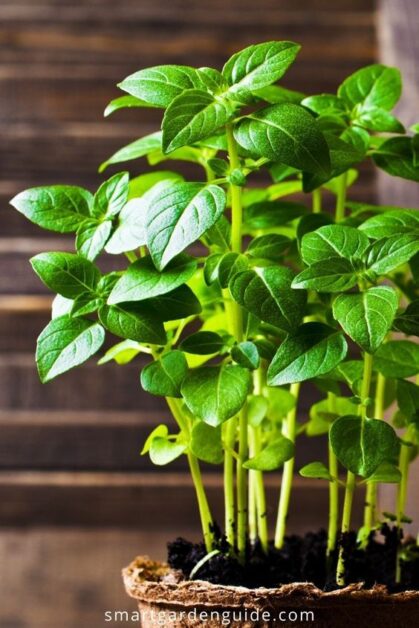
Advanced Hydroponic Techniques
One common method of propagating basil in a hydroponic system is through the use of stem cuttings. To do this, select a healthy and vigorous basil plant and carefully cut a 4-6 inch (10-15 cm) section of a stem just below a leaf node. Remove the lower leaves, leaving only a few leaves at the top. Place the cutting in a net cup filled with a growing medium, such as perlite or rock wool. Ensure that the bottom of the stem is submerged in the nutrient-rich water of the hydroponic system. Over time, roots will begin to develop from the cutting, and eventually, a new basil plant will emerge. This method allows for the quick and easy propagation of basil, making it a popular choice among hydroponic gardeners.
Commercial Hydroponic Basil Production
Commercial hydroponic basil production is a lucrative venture due to the herb’s popularity and the efficiency of hydroponic systems. These systems allow for year-round cultivation, independent of external climate conditions, and can result in higher yields with faster growth cycles compared to traditional farming.
The key to successful commercial production lies in system design and management. Large-scale operations often employ Nutrient Film Technique (NFT) or Deep Water Culture (DWC) systems, which are known for their scalability and high efficiency. In NFT systems, a thin film of nutrient solution flows over the roots of plants, providing them with constant access to water, oxygen, and nutrients. DWC systems, on the other hand, suspend plants above a reservoir of nutrient-rich water, allowing the roots to dangle directly into the solution.
Automation plays a significant role in commercial setups, with systems in place to monitor and adjust pH levels, nutrient concentrations, temperature, and humidity. This automation ensures optimal growing conditions and reduces labor costs. Additionally, integrated pest management strategies are crucial to prevent infestations and diseases that can quickly spread in the controlled environment.
DIY Hydroponic Basil Systems
For those interested in growing basil at home, DIY hydroponic systems offer a cost-effective and rewarding approach. These systems can range from simple Kratky setups, which require no electricity, to more complex systems with pumps and timers.
A basic DIY hydroponic system for basil can be constructed using common household items. For example, a simple DWC system can be made using a food-grade plastic container, net pots, hydroponic growing medium, and an air pump to oxygenate the water. The nutrient solution is mixed according to the needs of basil plants, and pH levels are maintained between 5.8 and 6.2 for optimal growth.
DIY systems provide an excellent opportunity for enthusiasts to experiment with hydroponic gardening. They can be customized to fit various spaces, from small kitchen counters to larger outdoor areas. The key to success with DIY systems is regular monitoring and maintenance to ensure the plants receive the right balance of nutrients and light.
Growing Basil Microgreens Hydroponically
Basil microgreens are young basil plants harvested just after the first true leaves have developed. They are highly nutritious and have a concentrated flavor, making them a popular choice for garnishes and flavoring.
Growing basil microgreens hydroponically is a quick process, usually taking around two to three weeks from seeding to harvest. The process begins with selecting a suitable microgreen variety of basil, which has been bred for its flavor and growth characteristics.
The seeds are sown densely in a shallow tray filled with a hydroponic growing medium, such as coconut coir or a soilless mix. The tray is then placed in a hydroponic system where it receives a gentle flow of nutrient solution. Lighting is crucial for microgreens, and they typically require 12-16 hours of light per day to thrive.
Harvesting basil microgreens involves cutting the plants just above the medium when they are 1-3 inches tall. This can be done with scissors or a sharp knife, taking care not to damage the delicate stems and leaves.
Planting and Transplanting
Planting and transplanting are critical stages in the life cycle of any plant, including hydroponic basil. These processes can be particularly nuanced when transitioning plants from a soilless hydroponic environment to soil, as it involves a significant change in the growing conditions. Here’s an exploration of the considerations and steps involved in planting and transplanting hydroponic basil into soil.
Planting Hydroponic Basil in Soil
Hydroponic basil is typically grown in a controlled environment where nutrients, pH, and moisture levels are carefully managed. When planting hydroponic basil in soil, it’s essential to acclimate the plant to its new environment gradually. This process, known as hardening off, involves exposing the plant to outdoor conditions incrementally over a week or two. Start by placing the basil outside for a few hours each day, gradually increasing the time it spends outdoors.
Before planting, choose a well-draining soil rich in organic matter. The soil should be loose and fertile, with a pH level between 6.0 and 7.0, which is slightly acidic to neutral. This pH range is conducive to nutrient uptake for basil plants. If the soil is too dense, consider amending it with compost or perlite to improve drainage and aeration.
When you’re ready to plant, dig a hole slightly larger than the root ball of your hydroponic basil. Gently remove the plant from its hydroponic medium, being careful not to damage the roots. If the plant is in a rockwool cube or similar medium, you can plant it directly into the soil, ensuring the top of the cube is level with the soil surface.
Water the basil thoroughly after planting to help settle the soil around the roots and eliminate air pockets. Maintain consistent moisture levels in the following weeks, but avoid overwatering, as this can lead to root rot.
Transplanting Hydroponic Basil to Soil
Transplanting hydroponic basil to soil is a delicate process that requires attention to the plant’s root system and its adaptation to a new growing medium. The key to a successful transition is minimizing stress on the plant.
Begin by preparing the soil as described above, ensuring it’s loose, fertile, and has the correct pH level. When removing the basil from its hydroponic system, handle the roots with care. If the roots have grown into the hydroponic medium, such as clay pebbles, gently tease them away. If they’re entangled, you can rinse them with water to help remove the medium.
Place the basil in the prepared hole and backfill with soil, pressing down gently to secure the plant. Water immediately to help the roots make contact with the soil and to reduce transplant shock.
After transplanting, keep an eye on your basil for signs of stress, such as wilting or yellowing leaves. If you notice any issues, adjust your care routine accordingly. It may take some time for the plant to fully adapt to its new environment.
Aftercare
Once your hydroponic basil has been planted or transplanted into soil, aftercare is crucial for its continued growth and health. Monitor the plant regularly for pests and diseases, and provide support if it becomes top-heavy with growth. Fertilize with a balanced, slow-release fertilizer to provide a steady supply of nutrients.
In conclusion, planting and transplanting hydroponic basil into soil can be a rewarding endeavor if done with care and consideration. By understanding the needs of your basil plants and providing the right conditions, you can enjoy a bountiful harvest of this aromatic herb. Whether you’re a seasoned gardener or new to the world of hydroponics, the versatility of basil makes it a delightful addition to any garden. 🌱
Conclusion
Advanced hydroponic techniques provide a versatile and efficient way to grow basil, whether for commercial production, DIY projects, or the cultivation of microgreens. By understanding the principles behind these systems and the specific requirements of basil, growers can achieve high-quality, flavorful crops that are both profitable and enjoyable to cultivate.
As the demand for fresh, locally-grown produce continues to rise, hydroponic basil production stands out as a sustainable solution that aligns with the future of agriculture. With the right knowledge and tools, anyone can master the art of growing basil hydroponically, reaping the benefits of this innovative farming method. 🌿
FAQs
Can I use any type of basil for hydroponic cultivation?
While there are many basil varieties suitable for hydroponic cultivation, it is recommended to choose varieties specifically bred for this method, such as Genovese, Thai, Lemon, Sweet, or Purple basil.
What are the unique characteristics of each basil variety suitable for hydroponics?
– Genovese basil: Known for its strong aroma and large leaves, perfect for pesto.
– Thai basil: Has a distinct anise flavor and is commonly used in Asian dishes.
– Lemon basil: Provides a refreshing citrusy aroma and taste.
– Sweet basil: The most common basil variety, known for its sweet and delicate flavor.
– Purple basil: Offers a visually striking appearance with purple leaves and a mild basil flavor.
How do I select the right basil variety for hydroponics?
When choosing a basil variety for hydroponic cultivation, consider factors such as flavor preference, aroma, growth characteristics, and the intended use of the basil in culinary or medicinal applications.
What temperature and humidity levels are optimal for basil growth in hydroponics?
Basil thrives in temperatures between 70-85°F (21-29°C) and a humidity level of around 50-70%. Maintaining these conditions will promote healthy growth and prevent stress-related issues.
What lighting requirements are necessary for hydroponic basil cultivation?
Basil plants require a minimum of 10-12 hours of artificial light per day. LED grow lights with a spectrum that includes blue and red wavelengths are commonly used to provide the necessary light for optimal growth.
What nutrient solutions and pH levels should I use for hydroponic basil plants?
Basil plants require a balanced nutrient solution that includes essential macronutrients (nitrogen, phosphorus, and potassium) as well as micronutrients. The pH level should be maintained between 5.5 and 6.5 for optimal nutrient uptake.
Which hydroponic system is best for growing basil?
There are various hydroponic systems suitable for growing basil, including nutrient film technique (NFT), deep water culture (DWC), and vertical hydroponic systems. The choice depends on factors such as available space, budget, and personal preference.
How do I set up and maintain a hydroponic basil system?
The steps to set up and maintain a hydroponic basil system include selecting the appropriate system, preparing the growing medium, setting up the nutrient solution reservoir, installing the lighting, and monitoring and adjusting the system regularly to ensure optimal growth.
What are some common issues in hydroponics and how can I troubleshoot them?
Common issues in hydroponics include nutrient deficiencies, pH imbalances, root rot, and pest infestations. Troubleshooting methods may involve adjusting nutrient levels, pH testing, and adjustment, ensuring proper aeration and drainage, and implementing pest control measures.

Kanike Sreekanth, a prolific writer at SouthElMonteHydroponics, brings a unique blend of creativity and scientific rigor to the table. With a degree in Horticulture from a prestigious institution, Kanike’s expertise spans hydroponic farming, plant biology, and agricultural sustainability. Their passion for exploring innovative cultivation methods and promoting environmental stewardship drives them to uncover new insights in the realm of hydroponics. Kanike’s writing serves as a conduit for sharing their knowledge and inspiring others to embrace alternative farming practices for a more sustainable future.

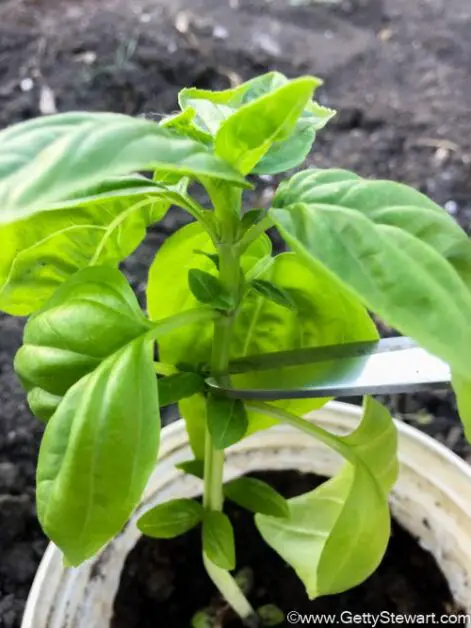
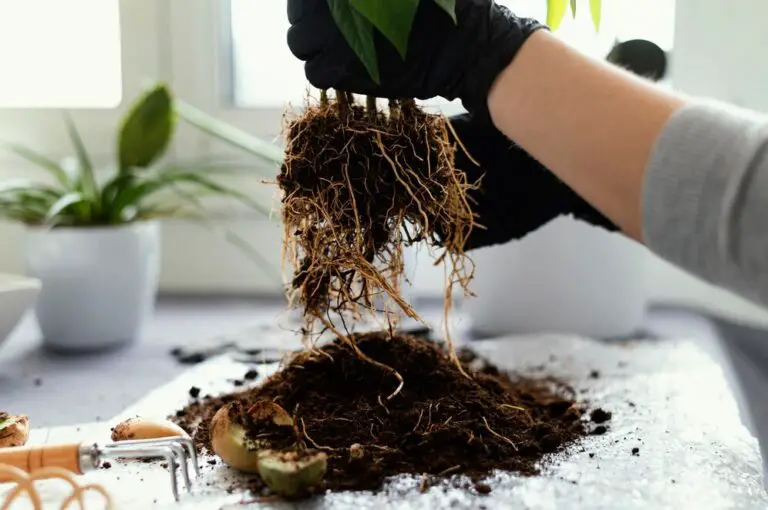
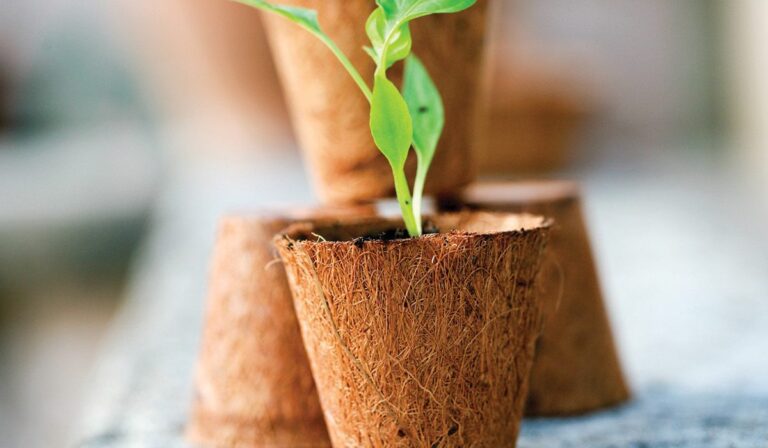



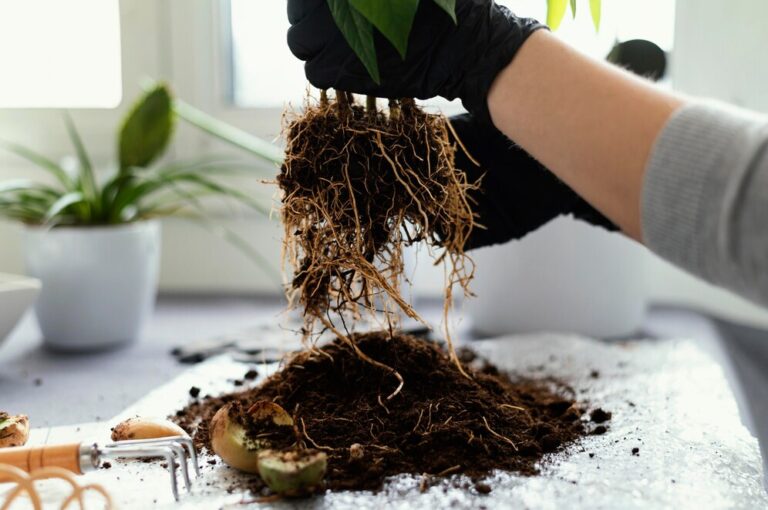
Hi there this is somewhat of off topic but I was wondering if blogs use WYSIWYG editors or if you have to manually code with HTML. I’m starting a blog soon but have no coding experience so I wanted to get advice from someone with experience. Any help would be enormously appreciated!